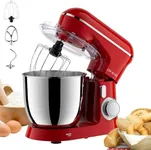Buying Guide for the Best Professional Stand Mixers
Choosing the right professional stand mixer can make a significant difference in your kitchen, especially if you frequently bake or cook in large quantities. A stand mixer can save you time and effort, providing consistent results for a variety of tasks such as mixing dough, whipping cream, and even making pasta. When selecting a stand mixer, it's important to consider several key specifications to ensure it meets your needs and preferences.Power (Wattage)Power, measured in watts, indicates the strength of the motor in the stand mixer. A higher wattage means the mixer can handle tougher tasks like kneading dense doughs or mixing large batches without straining. For light tasks like whipping cream or mixing cake batter, a mixer with 250-500 watts is sufficient. For more demanding tasks, look for mixers with 500-1000 watts. If you frequently work with heavy doughs or large quantities, opt for a higher wattage to ensure durability and performance.
Bowl CapacityBowl capacity determines how much mixture you can prepare at once. It is usually measured in quarts or liters. Smaller bowls (3-4 quarts) are suitable for small batches or occasional use. Medium bowls (5-6 quarts) are versatile and can handle most home baking needs. Larger bowls (7 quarts or more) are ideal for large batches or professional use. Consider your typical batch size and choose a bowl capacity that matches your needs to avoid overfilling or underutilizing the mixer.
Speed SettingsSpeed settings allow you to control the mixing process, ensuring the right consistency for different recipes. Most stand mixers come with multiple speed options, ranging from slow stirring to high-speed whipping. Basic models may have 3-5 speeds, while more advanced ones can offer up to 10 or more. If you need precise control for a variety of tasks, choose a mixer with more speed settings. For general use, 5-7 speeds are usually sufficient.
Attachments and AccessoriesAttachments and accessories expand the functionality of your stand mixer. Common attachments include dough hooks, flat beaters, and wire whisks. Some mixers also offer additional accessories like pasta makers, meat grinders, and food processors. Consider what tasks you plan to perform with your mixer and choose a model that includes or is compatible with the necessary attachments. This can save you from buying separate appliances and make your mixer more versatile.
Build Quality and DurabilityBuild quality and durability are crucial for a professional stand mixer, as it will likely see frequent use. Look for mixers made with high-quality materials like metal gears and sturdy housing. A well-built mixer will last longer and perform better under heavy use. Check for user reviews and brand reputation to gauge the reliability of the mixer. If you plan to use the mixer regularly or for heavy-duty tasks, investing in a durable model is essential.
Ease of CleaningEase of cleaning is an important consideration, as a stand mixer with many nooks and crannies can be difficult to maintain. Look for mixers with dishwasher-safe attachments and bowls, as well as smooth surfaces that are easy to wipe down. Some models have tilt-head designs or bowl-lift mechanisms that make it easier to access the bowl and attachments for cleaning. If you value convenience, choose a mixer that is designed with easy cleaning in mind.
Size and WeightSize and weight are important if you have limited counter space or plan to move the mixer frequently. Larger, heavier mixers are generally more stable and powerful but can be cumbersome to move. Smaller, lighter models are easier to store and transport but may not handle heavy tasks as well. Consider your kitchen space and how you plan to use the mixer. If you need a powerful mixer but have limited space, look for a compact model with a high wattage.
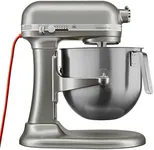
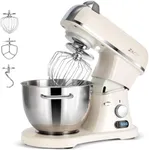
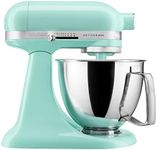

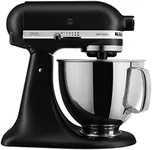
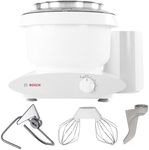


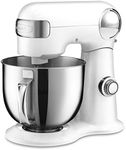


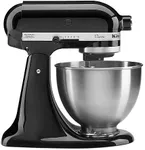
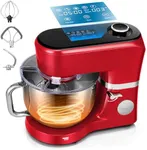
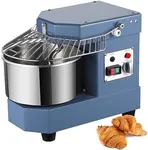
![Neretva Stand Mixer, [6.34QT& 6-Speed& 400W] Mixers Kitchen Electric Stand Mixer Lightweight& Large Capacity& LED Display Kitchen Mixer with Whisk, Flat Beater, Dough Hook](https://images-proxy.bestreviews.guide/xIiv9G7II8d4XYwdaR78j6E1F0A=/0x150/https://m.media-amazon.com/images/I/41AwGK5iS5L._AC_CX679_.jpg)
